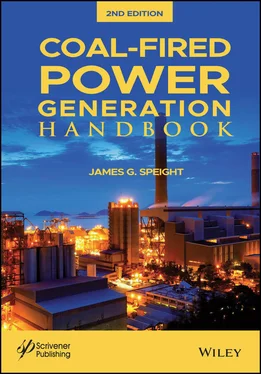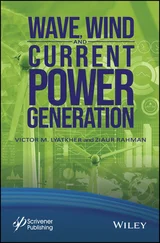Responsible auditing is required to reconcile the actual amount of coal in the stockpiles to the inventory record. By precisely knowing the tonnage of coal present in a stockpile, it is possible to reduce coal inventories that are too large. In addition, coal consumers are more stringent in their demands to both quality and price. However, taking advantage of the cheaper coal available on the market involves purchasing lower quality coal – hence the need for on-site blending operations.
Coal in storage should be inspected regularly and if the temperature reaches 60°C (140°F), the pile should be very carefully watched. If the temperature continues to rise rapidly, the coal should be moved as promptly as possible and the coal thus moved should be thoroughly cooled before being replaced in storage, or still better, it should be used at once. If the temperature rises slowly the pile should be carefully watched, but it is not necessary to begin moving the coal at as low a temperature as when the rise is rapid, for the temperature may recede and the danger be past.
Coal should be moved before it actually smokes. Such smoking may begin at temperatures as low as 85°C (180°F) – steaming should not be confused with smoking since steam can be frequently seen coming from a pile and this does not necessarily indicate a danger point. Temperature tests of coal in storage should be made, if possible, and one should not depend on such indications of fire as odor or smoke coming from the coal.
Inflammable material, such as waste, paper, rags, wood, rosin, oil, and tar in a coal pile often form the starting point for a fire, and every effort should be made to keep such material from the coal as it is being placed in storage. Irregular admission of air into the coal pile around the legs of a trestle, through a porous bottom such as coarse cinders, or through cracks between boards, etc., should be avoided.
It is important that coal in storage should not be subject to such external sources of heat as steam pipes, because the susceptibility of coal to spontaneous combustion increases rapidly as the temperature rises. The effect of ventilating of coal remains a disputed point, but the weight of evidence in the United States seems to be against the practice. This may possibly be due to the fact that ventilation has been imperfect and has done more to promote oxidation than cooling of the stockpile.
The majority of the coal stockpile fires appear to have occurred within ninety days after the coal was placed in storage. Hence particular attention should be given to the pile during the first three months that it is in storage. The greater the area of the pile exposed to the air the more quickly will the danger be passed.
Finally, a storage plan must consider all of the conditions, and not only a part of the ambient conditions at the site. For example, clean, lump coal of a certain kind may be stored with safety in high piles – while the same coal, run-of-mine or unscreened, may not be safely stored at all, or at least only in smaller piles. Lack of attention to details during storage or failure systematically to inspect storage piles and to be ready for any emergency that may occur may result in safety hazards and losses from fires. It must also be obvious that as the amount of coal stored increases, increased care must be taken in the method of storing and in watching the coal after storage.
4.2.3 Coal Mixing, Homogenization, and Blending
Coal mixing is the random rearrangement of coal particles by means of mechanical energy, such as use of a rotary device in a fixed volume. Traces of individual components can still be located within a small quantity of the mixed material of two or more material types and is common for small-scale storage of coal.
Thus, coal homogenization refers to the process of mixing coal to reduce the variance of the product supplied. This homogenization process is performed during the coal stockpiling operation. Thus, coal homogenization is the systematic regrouping of the input flow in order to provide a more homogeneous output flow of one type of material so that inherent fluctuations of chemical or physical properties in time are evened out compared to the input flow. A common application of this method is when one batch of coal is homogenized.
Coal blending is the integration of a number of raw materials with different physical or chemical properties in time in order to create a required specification or blend. The aim is to achieve a final product from, for example, two or more coal types, that has a well- defined chemical composition in which the elements are very evenly distributed and no large pockets of one type can be identified. When sampled, the average content and the standard deviation from the average are the same. The method is used for different types of coal for specific purposes.
Although the terms blending and homogenization are often used interchangeably, there are differences. The most notable difference is that blending refers to stacking coal from different sources together on one stockpile. The reclaimed heap would then typically have a weighted average output quality of the input sources. In contrast, homogenization focuses on reducing the variation of only one source. A blending operation will cause some homogenization.
Blending is typically achieved through the stockpiling of different coals on a stockpile or within the hatch of the vessel (in the case of transportation by water) during ship loading. Stacking methodology (such as the windrow method, the cone shell method, the Chevron method) can also impact the homogeneity of the final blended material. Blending sometimes will take place prior to the coal handling and processing operations in order to achieve attributes (e.g., feed ash levels) that can improve coal handling and processing operations production rates.
Blending may take place in several locations within the demand chain including (i) before entering the processing plant, (ii) immediately after the processing plant, (iii) train load out, (iv) port stockyard, (v) ship loading, and (vi) at the customer stockyard. Blending decisions impact the total tonnes of each product that a mine site is able to sell. In addition, the quality attributes of a product can impact the final sale value of the product. Because blending has a significant impact on mine site revenue, several decision support systems have been developed with the aim of improving product reliability and profitability.
Blend analysis is the process of understanding what blending options exist within a specified schedule and how these options impact product quality, projected revenue, and scheduled mining decisions.
Sampling of coal is an important part of the process control. A grab sample is a sample of the coal at a point in the process stream, and tends not to be very representative. A routine sample is taken at a set frequency, either over a period of time or per shipment. Coal sampling consists of several types of sampling devices. A cross cut sampler mimics the stop belt sampling method the cross cut sampler mounts directly on top of the conveyor belt, the falling stream sampler is placed at the head section of the belt. There are several points in the wash plant that many coal operations choose to sample the raw coal before it enters the plant.
Coal blending in a power station scenario is mainly adopted to reduce the cost of generation and increase availability of coal. The low-grade coals can be mixed with better grade coal without deterioration in thermal performance of the boiler thus reducing the cost of generation. In many nations, blending of coal was being adopted for a long period mainly for increasing the availability of coal for power generation. To improve the availability of coal and also to improve the calorific value of coal being fired, some of the power stations look at the possibility of mixing high-grade imported coal with the low-grade high-ash coals.
Читать дальше












